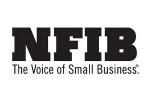WASHINGTON — For any small- to mid-sized business, finding proper capital is crucial for starting or expanding a company. While the process can be confusing, doing some research before applying for a loan can spell the difference between failure and success.
This was the message of Joseph W. Major, chair and CEO of The Victory Bank and Victory Bancorp, Inc. in Limerick, Pennsylvania, near Philadelphia. Major offered his counsel during a recent webinar — “Small Business Loans and Financing — A Banker’s Expert Advice” — sponsored by the National Federation of Independent Business (NFIB).
In Part 1 of this series, we looked at the importance of finding the right financial partner and the value of a proper business plan. Today, we’ll turn our attention to some of the most common types of loans when it comes to funding a start-up business or expanding an existing one.
The SBA Loan Option
Many banks are able to make loans to business owners or start-up entrepreneurs because of a government program.
“The Small Business Administration (SBA) has offered loans for a long time,” Major says.
“I view it as one of the more successful things that has ever come out of government.”
That being said, getting an SBA loan requires a lot of work on both the borrower's and the bank’s part.
“It’s big and it’s bureaucratic,” he says. “There is a ton of paperwork and a lot of detail to actually get a loan application through the SBA process and finally approved. It’s often a difficult, lengthy and frustrating process. However, it’s also very often the only thing you can do. It’s the best option that you might have as a borrower.”
Risk is the reason why these loans can prove to be essential to a business.
“You start a new business, and either you’ve only been open for a few months, or you’re not even open at all,” Major says. “You just have an idea, and you’ve got a little bit of angel money that you got from your brother or someone. You’re going to start this business on a song, and you start running the numbers, and the accountant tells you, ‘Whoa, you’re going to need half a million dollars of working capital.’ So, you think, ‘Where am I going to get that kind of money?’”
The bank is the logical answer to this question, but the bank needs some answer for it to make business sense.
“The bank sees that the business has never been open,” Majors says. “This is just an idea. Do you have some kind of collateral you can give us to back this up? The answer is ‘no,’ and all of a sudden you think that this can’t work. That’s why SBA is there, and most small banks that do commercial lending either have their own SBA department or have SBA consultants.”
SBA 504 and 7(a) Loan Programs
Two of the most common loans to businesses through the SBA are the 504 loans and the 7(a) loans, Major says.
“The 504 deals with real estate,” Major says. “That’s for somebody trying to do something with a building or a piece of property. Under the 504, the lending institution ends up lending you 50% of the value of the building. So, if it’s a million-dollar building, the bank will loan you half a million dollars.”
Finding the other half-million, in this example, is where the SBA loan comes in.
“The SBA steps in with 40% behind the bank, and the borrower puts up 10%,” Majors says. “So in that situation, the borrower would put up $100,000, the SBA would put up $400,000 and the bank puts up half a million dollars.”
This helps with the risk factor of loaning on a business, especially if it’s a start-up with no track record.
“Most important to the bank is that they’re in first lien position on the mortgage,” Majors says. “If there’s a default, the bank can take the building back, sell it, even at a discount, and still pay itself off 100%. The SBA will get whatever’s left, and the borrower will lose their $100,000. It’s a way to shift the high-risk startup situation on a piece of real estate. It is an important program. It’s used a lot.”
The 504, however, is relatively small compared to the 7(a), Majors says.
“The 7(a) is a much more all-inclusive program,” he says. “You’re trying to start a business, and it may or may not have a real estate component to it. The 7(a) is really there to help a start-up business get off the ground, and get them enough working capital to get going.”
Major notes that, because of risk, the 7(a) loan really requires a well-thought-out business plan.
“The SBA guarantees 75% on a 7(a) loan, so for $1,000,000, the SBA insures $750,000, leaving an uninsured $250,000 for the bank,” he says. “If the bank is really not sold on your business, they’re not going to take that 25% risk.”
Interest Rates
Major says that, while the SBA loans are popular ways to get capital for a business, there is a trade-off when it comes to interest rates over a conventional loan.
“It’s usually a point or two higher than the market rate for a similar loan,” he says. “If the bank would loan you this money at 7%, the SBA is going to charge you 8% or 9%. It’s not exorbitant, though, given the risks associated with the startup business — usually the SBA rate is extremely attractive.”
While it is a little more expensive than dealing with the bank directly, Major believes that the 7(a) and 504 loan programs have been a great benefit to American small businesses.
“It’s actually a tremendous program,” he says. “There are lots of businesses in this country who got started with 7(a) loans. Then, they grow to where they were able to use more conventional financing. If you’re talking to any local banker who knows what they’re doing with commercial lending, and if they think you’re a good candidate for SBA, they’re going to bring it up. They’re going to teach you how to do it, and explain why you want the SBA. Remember, if they were willing to do the loan without the SBA, they would.”
Come back Thursday for the conclusion of this series, where we’ll examine the process of getting a loan, and the increasing role of technology in the financial industry. For Part 1, click HERE.
Have a question or comment? E-mail our editor Dave Davis at [email protected].










































